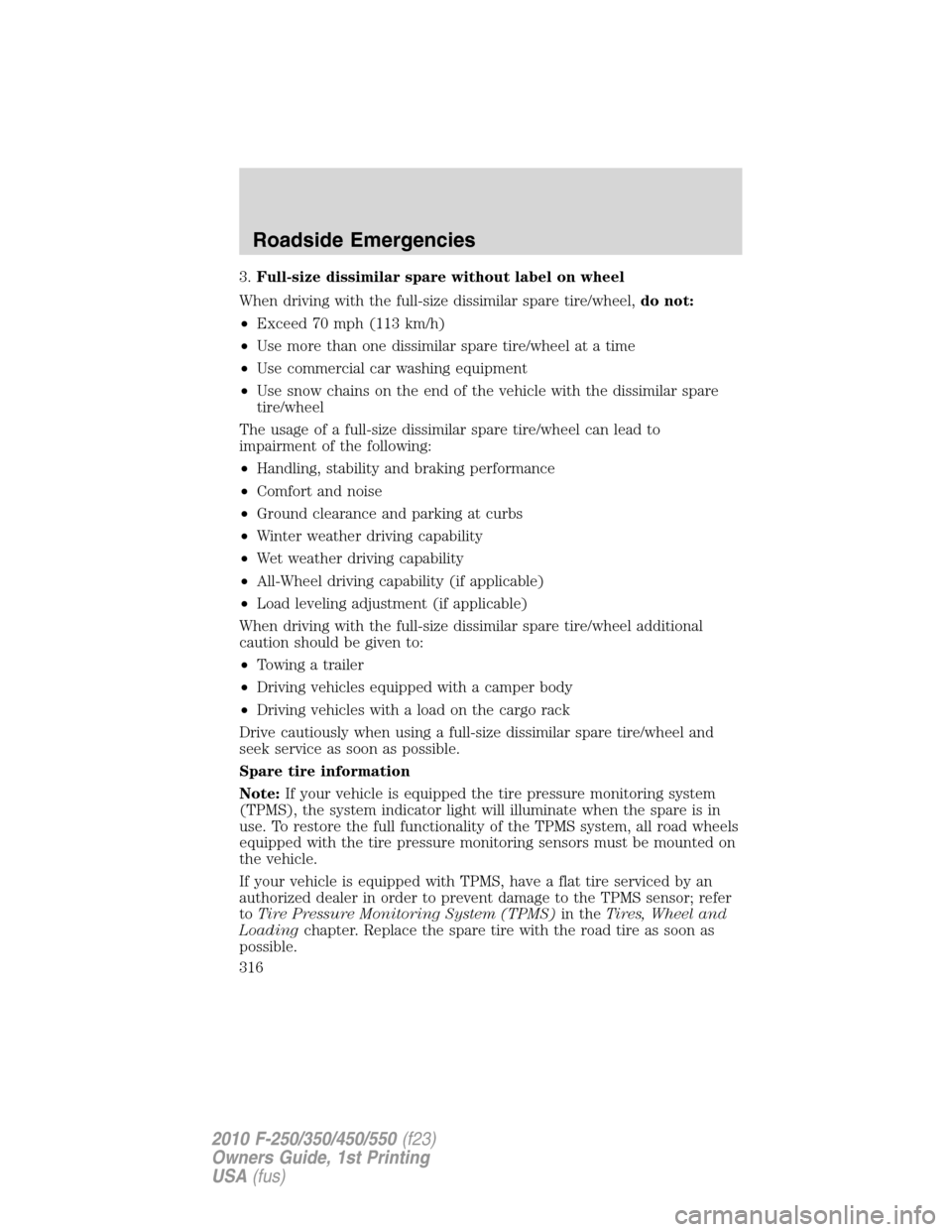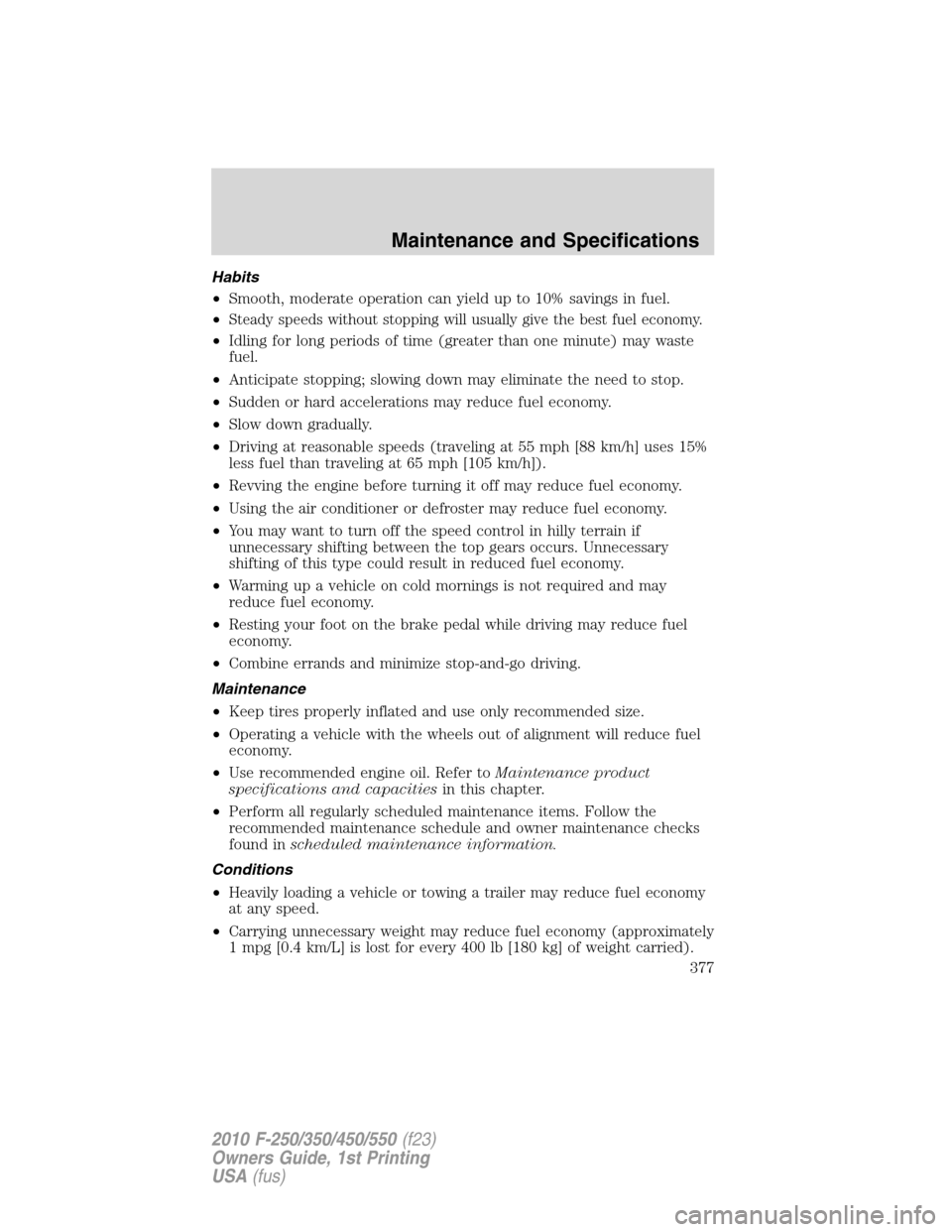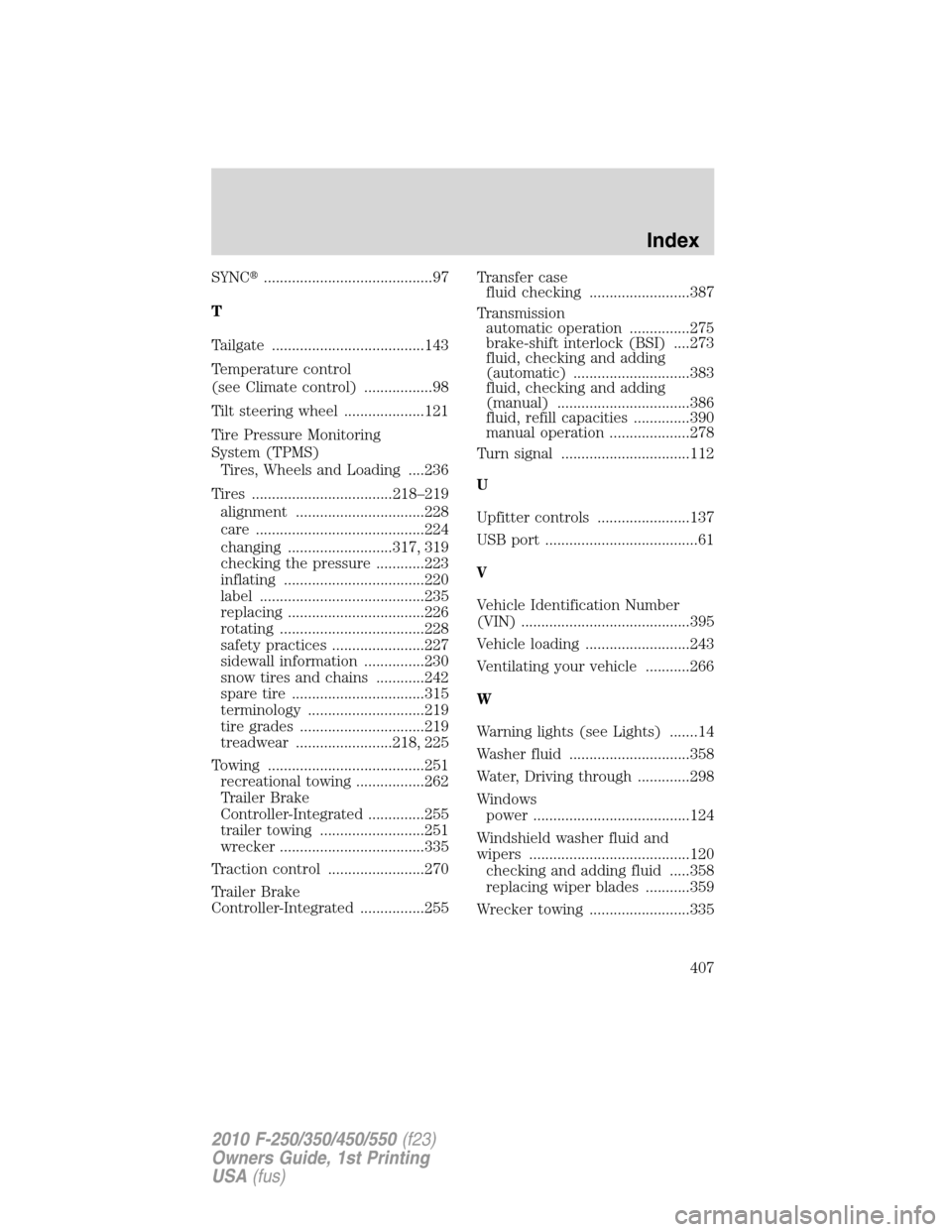Page 316 of 407

3.Full-size dissimilar spare without label on wheel
When driving with the full-size dissimilar spare tire/wheel,do not:
•Exceed 70 mph (113 km/h)
•Use more than one dissimilar spare tire/wheel at a time
•Use commercial car washing equipment
•Use snow chains on the end of the vehicle with the dissimilar spare
tire/wheel
The usage of a full-size dissimilar spare tire/wheel can lead to
impairment of the following:
•Handling, stability and braking performance
•Comfort and noise
•Ground clearance and parking at curbs
•Winter weather driving capability
•Wet weather driving capability
•All-Wheel driving capability (if applicable)
•Load leveling adjustment (if applicable)
When driving with the full-size dissimilar spare tire/wheel additional
caution should be given to:
•Towing a trailer
•Driving vehicles equipped with a camper body
•Driving vehicles with a load on the cargo rack
Drive cautiously when using a full-size dissimilar spare tire/wheel and
seek service as soon as possible.
Spare tire information
Note:If your vehicle is equipped the tire pressure monitoring system
(TPMS), the system indicator light will illuminate when the spare is in
use. To restore the full functionality of the TPMS system, all road wheels
equipped with the tire pressure monitoring sensors must be mounted on
the vehicle.
If your vehicle is equipped with TPMS, have a flat tire serviced by an
authorized dealer in order to prevent damage to the TPMS sensor; refer
toTire Pressure Monitoring System (TPMS)in theTires, Wheel and
Loadingchapter. Replace the spare tire with the road tire as soon as
possible.
Roadside Emergencies
316
2010 F-250/350/450/550(f23)
Owners Guide, 1st Printing
USA(fus)
Page 377 of 407

Habits
•Smooth, moderate operation can yield up to 10% savings in fuel.
•
Steady speeds without stopping will usually give the best fuel economy.
•Idling for long periods of time (greater than one minute) may waste
fuel.
•Anticipate stopping; slowing down may eliminate the need to stop.
•Sudden or hard accelerations may reduce fuel economy.
•Slow down gradually.
•Driving at reasonable speeds (traveling at 55 mph [88 km/h] uses 15%
less fuel than traveling at 65 mph [105 km/h]).
•Revving the engine before turning it off may reduce fuel economy.
•Using the air conditioner or defroster may reduce fuel economy.
•You may want to turn off the speed control in hilly terrain if
unnecessary shifting between the top gears occurs. Unnecessary
shifting of this type could result in reduced fuel economy.
•Warming up a vehicle on cold mornings is not required and may
reduce fuel economy.
•Resting your foot on the brake pedal while driving may reduce fuel
economy.
•Combine errands and minimize stop-and-go driving.
Maintenance
•Keep tires properly inflated and use only recommended size.
•Operating a vehicle with the wheels out of alignment will reduce fuel
economy.
•Use recommended engine oil. Refer toMaintenance product
specifications and capacitiesin this chapter.
•Perform all regularly scheduled maintenance items. Follow the
recommended maintenance schedule and owner maintenance checks
found inscheduled maintenance information.
Conditions
•Heavily loading a vehicle or towing a trailer may reduce fuel economy
at any speed.
•Carrying unnecessary weight may reduce fuel economy (approximately
1 mpg [0.4 km/L] is lost for every 400 lb [180 kg] of weight carried).
Maintenance and Specifications
377
2010 F-250/350/450/550(f23)
Owners Guide, 1st Printing
USA(fus)
Page 407 of 407

SYNC�..........................................97
T
Tailgate ......................................143
Temperature control
(see Climate control) .................98
Tilt steering wheel ....................121
Tire Pressure Monitoring
System (TPMS)
Tires, Wheels and Loading ....236
Tires ...................................218–219
alignment ................................228
care ..........................................224
changing ..........................317, 319
checking the pressure ............223
inflating ...................................220
label .........................................235
replacing ..................................226
rotating ....................................228
safety practices .......................227
sidewall information ...............230
snow tires and chains ............242
spare tire .................................315
terminology .............................219
tire grades ...............................219
treadwear ........................218, 225
Towing .......................................251
recreational towing .................262
Trailer Brake
Controller-Integrated ..............255
trailer towing ..........................251
wrecker ....................................335
Traction control ........................270
Trailer Brake
Controller-Integrated ................255Transfer case
fluid checking .........................387
Transmission
automatic operation ...............275
brake-shift interlock (BSI) ....273
fluid, checking and adding
(automatic) .............................383
fluid, checking and adding
(manual) .................................386
fluid, refill capacities ..............390
manual operation ....................278
Turn signal ................................112
U
Upfitter controls .......................137
USB port ......................................61
V
Vehicle Identification Number
(VIN) ..........................................395
Vehicle loading ..........................243
Ventilating your vehicle ...........266
W
Warning lights (see Lights) .......14
Washer fluid ..............................358
Water, Driving through .............298
Windows
power .......................................124
Windshield washer fluid and
wipers ........................................120
checking and adding fluid .....358
replacing wiper blades ...........359
Wrecker towing .........................335
Index
407
2010 F-250/350/450/550(f23)
Owners Guide, 1st Printing
USA(fus)